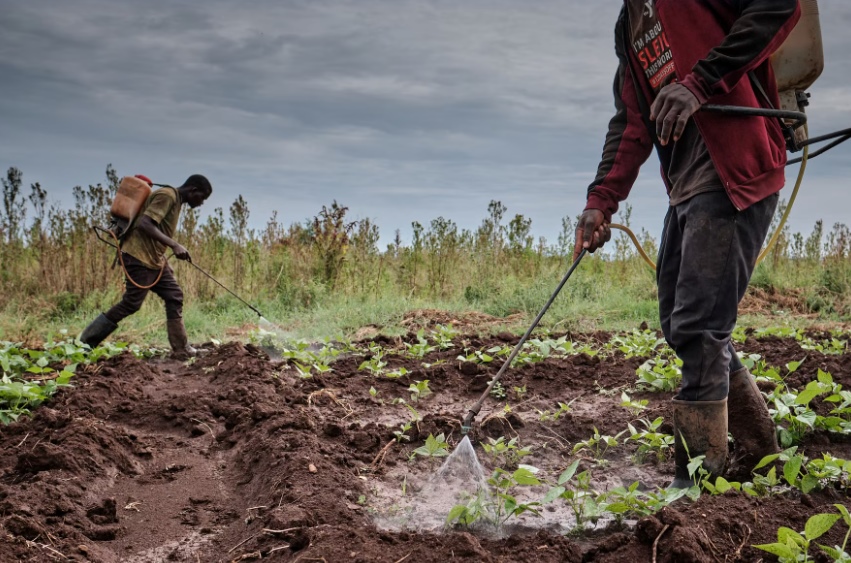Government moves to protect farmers with 10-day payout rule for climate insurance

The framework aims to ensure that payouts are timely, transparent and scientifically grounded, protecting smallholder farmers and pastoralists from recurrent droughts and floods.
In a bid to shield farmers from the rising financial risks of climate change, the government is introducing regulations requiring insurers to pay out claims under weather-based insurance within 10 days.
The framework aims to ensure that payouts are timely, transparent and scientifically grounded, protecting smallholder farmers and pastoralists from recurrent droughts and floods.
More To Read
- Climate finance failing the most vulnerable, just 2.8 per cent supports fair transition - ActionAid Report
- Africa’s top climate change challenges: A fairer deal on phasing out fossil fuels and mobilising funds
- Extreme weather affects mental health: what vulnerable women in Kenya told us
- Kenya launches Africa’s first REDD+ registry in landmark UK partnership to boost climate action
- New study warns the world is running out of time to avoid the worst impacts of climate change
- New government initiative offers climate insurance to 250,000 Kenyan farmers
The draft Insurance (Index Insurance) Regulations, 2025, will regulate how premiums are set and claims are settled under index-based insurance, a type of coverage that compensates policyholders based on a pre-determined index such as rainfall data or satellite-recorded vegetation levels, rather than individual loss assessments.
Currently, insurers have been developing and offering climate-related products such as crop and livestock covers without a clear legal framework to guide implementation or protect policyholders. The new rules seek to close this gap by compelling insurers to design products that are fair, transparent, and scientifically sound.
“An insurer shall make payouts within 10 days after the index has been triggered,” reads the draft in part.
Unlike conventional insurance, which requires a physical verification of damage, index insurance automatically triggers payments once a measurable indicator, such as rainfall, temperature, or vegetation indices, crosses a set threshold.
The proposed regulations also tighten oversight by requiring every index-based product to be pre-approved by the Insurance Regulatory Authority (IRA). The IRA will be empowered to impose penalties of up to Sh1 million on insurers who fail to comply, cancel their licences, or direct them to take remedial action.
The cover is designed to protect farmers and pastoralists from losses caused by droughts and floods, using scientific data to determine when payouts should occur. For instance, if rainfall levels drop below a pre-set threshold or satellite imagery indicates severe pasture loss, payments are triggered automatically.
“An index insurance product may be designed such that the index triggers payment by the insurer before the occurrence of the insured risk, where the payment is designed, at least in part, to compensate the policyholder for meeting the costs of preparing for, and mitigating the effect of, the insured risk,” the draft adds.
According to the proposed framework, insurers must also minimise what is known as “basis risk”—the mismatch that occurs when the data trigger does not perfectly reflect the actual loss experienced on the ground.
To enhance accountability, insurers will be required to submit detailed documentation to the IRA, including policy wording, pricing models, and explanations of how the indices were developed. Independent calculating agents, responsible for determining triggers and payouts, will also be vetted and accredited by the authority.
Index-based insurance is gaining traction globally as a key tool for managing climate-related financial risks. It has been effectively implemented in countries such as India, Latin American nations and across the Caribbean.
For example, the Caribbean Catastrophe Risk Insurance Facility compensates member states within two weeks of a hurricane or earthquake, while African Risk Capacity offers similar drought insurance across the continent.
In Kenya, most of the existing index-based insurance products have been introduced through donor-supported programmes, primarily targeting arid and semi-arid regions that are most vulnerable to prolonged droughts and erratic rainfall.
The regulations come at a crucial time for Kenya, where the agricultural sector, accounting for nearly a quarter of the national economy, continues to suffer from unpredictable weather patterns and recurrent dry spells. The new framework is designed to integrate insurance into the country’s climate adaptation and disaster response systems, positioning climate insurance as an effective financial shock absorber for farmers, households, and businesses.
Top Stories Today











































